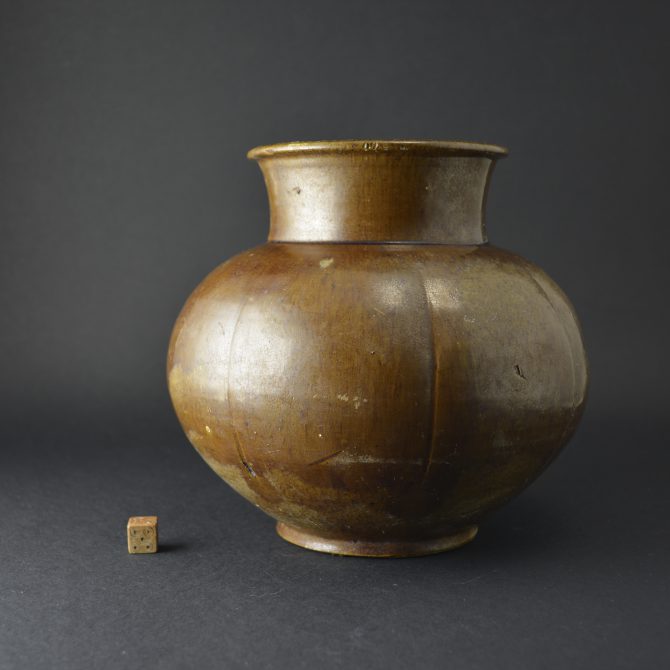
Liao Melon Shaped Pottery Jar 907 – 1125
A rare Liao pottery jar, Liao Dynasty 907-1125. This melon shaped jar is thinnly potted, the clay is of a rather open texture giving the pot a light feeling in the hand despite looking substantial. The lines between the lobes are handworked and a little uneven. This Liao jar was ‘double dipped’, with the two layers of brown glaze clearly visible. Like most Liao ceramics there is a high degree of flux within the translucent glaze, small amounts of unabsorbed pigment (probably iron-oxide) can be seen.
SOLD
- Condition
- In very good condition, a few very minor glaze losses and signs of burial.
- Size
- Height : 16.4 cm (5 1/2 inches)
- Provenance
- A Private English Collection of Early Chinese Ceramics.
- Stock number
- 25214
Information
The Liao Dynasty:
The Liao dynasty also known as the Liao Empire (officially the Great Liao), or the Khitan Empire was an empire in East Asia that ruled from 907 to 1125 over present-day Mongolia and portions of the Russian Far East, northern Korea, and northern China. The empire was founded by Abaoji, Khagan of the Khitan people around the time of the collapse of Tang China and was the first state to control all of Manchuria.
Almost immediately after its founding, the Khitan Empire began a process of territorial expansion, with Abaoji leading a successful conquest of Balhae. Later emperors would gain the Sixteen Prefectures by fueling a proxy war that led to the collapse of the Later Tang (923–936) and would establish tributary relationships with Goryeo and Song China after failing to conquer Goryeo.
Tension between traditional Khitan social and political practices and Chinese influence and customs was a defining feature of the dynasty. This tension led to a series of succession crises; Liao emperors favored the Chinese concept of primogeniture, while much of the rest of the Khitan elite supported the traditional method of succession by the strongest candidate. So different were Khitan and Chinese practices that Abaoji set up two parallel governments. The Northern Administration governed Khitan areas following traditional Khitan practices, while the Southern Administration governed areas with large non-Khitan populations, adopting traditional Chinese governmental practices.
Differences between Chinese and Khitan society included gender roles and marital practices: the Khitans took a more egalitarian view towards gender, in sharp contrast to Chinese cultural practices that segregated men's and women's roles. Khitan women were taught to hunt, managed family property, and held military posts. Many marriages were not arranged, women were not required to be virgins at their first marriage, and women had the right to divorce and remarry.
The Liao dynasty was destroyed by the Jurchen people of the Jin dynasty in 1125 with the capture of Emperor Tianzuo of Liao. However, the remnant Khitan, led by Yelü Dashi, established the Qara Khitai (Western Liao dynasty), which ruled over parts of Central Asia for almost a century before being conquered by the Mongols. Although cultural achievements associated with the Liao dynasty are considerable, and a number of various statuary and other artifacts exist in museums and other collections, major questions remain over the exact nature and extent of the influence of the Liao Khitan culture upon subsequent developments, such as the musical and theatrical arts.
information source: Wikipedia.










